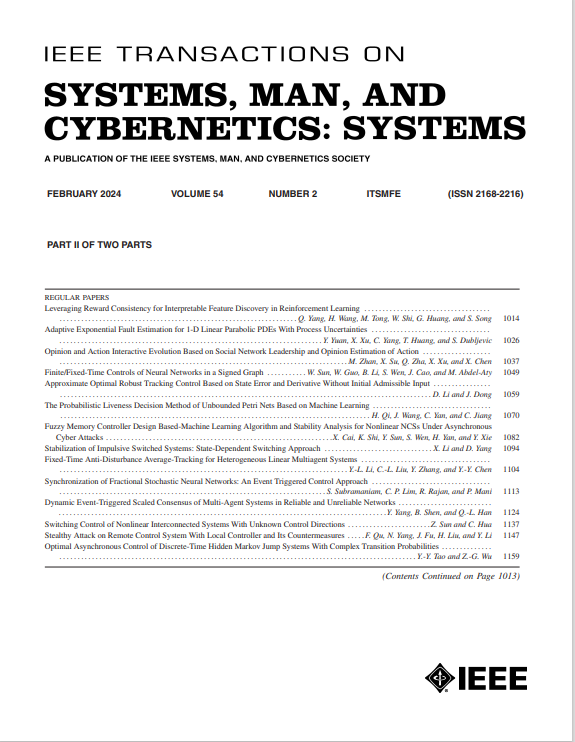D-LORD for Motion Stylization
IF 8.6
1区 计算机科学
Q1 AUTOMATION & CONTROL SYSTEMS
IEEE Transactions on Systems Man Cybernetics-Systems
Pub Date : 2024-12-03
DOI:10.1109/TSMC.2024.3502498
引用次数: 0
Abstract
This article introduces a novel framework named double-latent optimization for representation disentanglement (D-LORD), which is designed for motion stylization (motion style transfer and motion retargeting). The primary objective of this framework is to separate the class and content information from a given motion sequence using a data-driven latent optimization approach. Here, class refers to person-specific style, such as a particular emotion or an individual’s identity, while content relates to the style-agnostic aspect of an action, such as walking or jumping, as universally understood concepts. The key advantage of D-LORD is its ability to perform style transfer without needing paired motion data. Instead, it utilizes class and content labels during the latent optimization process. By disentangling the representation, the framework enables the transformation of one motion sequence’s style to another’s style using adaptive instance normalization. The proposed D-LORD framework is designed with a focus on generalization, allowing it to handle different class and content labels for various applications. In addition, it can generate diverse motion sequences when specific class and content labels are provided. The framework’s efficacy is demonstrated through experimentation on three datasets: 1) the CMU XIA dataset for motion style transfer; 2) the multimodal human action database dataset; and 3) the RRIS Ability dataset for motion retargeting. Notably, this article presents the first generalized framework for motion style transfer and motion retargeting, showcasing its potential contributions in this area.D-LORD代表动态风格化
本文介绍了一种新的框架,称为双潜优化表示解纠缠(D-LORD),它是为运动风格化(运动风格转移和运动重定向)而设计的。该框架的主要目标是使用数据驱动的潜在优化方法从给定的运动序列中分离类和内容信息。在这里,类指的是特定于个人的风格,例如特定的情感或个人的身份,而内容则与动作的风格无关的方面有关,例如行走或跳跃,作为普遍理解的概念。D-LORD的主要优势在于它能够在不需要配对运动数据的情况下进行风格转换。相反,它在潜在优化过程中使用类和内容标签。通过分解表示,该框架允许使用自适应实例规范化将一个运动序列的样式转换为另一个运动序列的样式。提出的D-LORD框架的设计重点是泛化,允许它为各种应用处理不同的类和内容标签。此外,当提供特定的类和内容标签时,它可以生成不同的运动序列。通过三个数据集的实验证明了该框架的有效性:1)CMU XIA数据集用于运动风格转移;2)多模态人类行为数据库数据集;3)用于运动重定向的RRIS Ability数据集。值得注意的是,本文提出了第一个运动风格转移和运动重定向的通用框架,展示了它在这一领域的潜在贡献。
本文章由计算机程序翻译,如有差异,请以英文原文为准。
求助全文
约1分钟内获得全文
求助全文
来源期刊

IEEE Transactions on Systems Man Cybernetics-Systems
AUTOMATION & CONTROL SYSTEMS-COMPUTER SCIENCE, CYBERNETICS
CiteScore
18.50
自引率
11.50%
发文量
812
审稿时长
6 months
期刊介绍:
The IEEE Transactions on Systems, Man, and Cybernetics: Systems encompasses the fields of systems engineering, covering issue formulation, analysis, and modeling throughout the systems engineering lifecycle phases. It addresses decision-making, issue interpretation, systems management, processes, and various methods such as optimization, modeling, and simulation in the development and deployment of large systems.
 求助内容:
求助内容: 应助结果提醒方式:
应助结果提醒方式:


